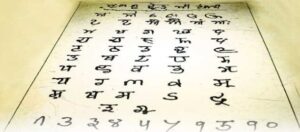
Formerly, people were using their native languages to communicate or gain knowledge, but now people are losing interest in their languages. The extinction threat in India is rapidly increasing and a number of languages are under threat. One of which is Baghati, an indigenous language of Himachal Pradesh. UNESCO has already categorized several languages under five important categories that are vulnerable, several endangered, critically endangered, extinction, and definitely endangered (Singh, 2020). This is no doubt is increasing tension among the community to preserve their languages which are under threat of extinction. The Baghati of Himachal Pradesh is also considered critically endangered by UNESCO and several steps have been taken to encourage people to uphold their culture as well as languages.
Why Linguistic diversity?
Linguistic diversity plays a pivotal role in society as it helps in representing different use of different languages (Lupyan & Dale, 2016). Reportedly, 25000 more languages are in danger across the world which is calling attention to safeguard.
“A scheme of Protection and preservation of endangered languages of India has been implemented by the Indian government in 2014”- reported by UNESCO.
This scheme enables the documentation, preservation, and protection of all the languages that are used by more than 10000 people in India (Singh, 2020). Indeed, for language diversity, the people of India need to cherish their Indian languages and arrange institutional facilities so that a large set of people can speak and understand the value of the languages. The inclusion of the tribal languages mainly contributes to the creation of new knowledge and it is human nature to appreciate languages other than their own. However, the speaking population of Baghati in 2001 was ten lakhs but by the time it has reduced to only 8000 which shows how the community has shifted to another language.
Measures
Here the Indian government has initiated a scheme of Protection and Preservation of endangered languages of India through which the central institute of Indian languages, Mysore continuously stresses the preservation and protection of the languages. Further, the government granted a project well known as Bharatavani adopted by the central institute of Indian languages for all languages. Such a project intends to develop a searchable knowledge repository about the languages in different formats such as audio, images and pdfs through a web page. On the other side, the UGC has permitted a scheme- study and research in the indigenous and endangered language in India and approved access to the nine central universities as well as six regional universities for the development of various centers for the languages that are under threat in the respective universities.
References
Eesha Duggal. (2018, May 16). When a language faces extinction. Retrieved from The tribune: https://www.tribuneindia.com/news/archive/features/when-a-language-faces-extinction-584691
Lupyan, G., & Dale, R. (2016). Why are there different languages? The role of adaptation in linguistic diversity. Trends in cognitive sciences, 20(9), 649-660. Retrieved from http://cognaction.org/rdmaterials/php.cv/pdfs/article/lupyan_dale_tics.pdf
Singh, B. S. (2020). Language Endangerment and Language Revitalization in Himalaya. Retrieved from http://pahari-languages.ru/wp-content/uploads/2021/01/Kullui-endangerment-2.pdf